Reviews
Frederick Wiseman
USA, 1994
Credits
Review by Leo Goldsmith
Posted on 22 June 2008
Source Zipporah Films DVD
Categories Frederick Wiseman
Frederick Wiseman’s second film, High School, opens with “(Sittin’ On) The Dock of the Bay,” Otis Redding’s great anthem to indolence, and then penetrates the walls of Philadelphia’s Northeast High School, where the students seem to match the song’s lethargy. The year is 1968, and while war and unrest rages outside, order and banality coddle within. But for a passing discussion of Jean-Paul Sartre (“un filósofo existencialista”) in Spanish class, and a furtive discussion among the more radical (read: long-haired) students about the problems of Northeast’s “cloistered” environment, the impression one gleans from Wiseman’s film, forty years on, is one of total control. It is an environment in which one must accept his punishment to prove his manhood (and not his point), in which the word “individualistic” is bandied about pejoratively, in which teachers and administrators weigh in authoritatively on the students’ sex lives, and in which a simulated space flight (which seems to entail locking a trio of eager students in a closet for some hundred hours) becomes a metaphor of (micro)cosmic proportions.
Given what we know or recall about 1968 and the many concurrent social and political events happening internationally, it is difficult from this vantage point to take Wiseman’s portrait otherwise. But this illuminates at least as much about the changes in society and education in the intervening decades as it does Wiseman’s own intent, which is precisely what makes the director’s second High School film so important in his body of work—and even in our conception of American education in the last half-century as a whole. Where the first film emphasized the homogenous student body and systematic pedagogy of a largely white, middle-class high school, complete with the imposition and reinforcement of conservative, early 60’s values, High School II chronicles the Central Park East Secondary School (CPESS), a very progressive school with an incredibly diverse student body and a staff committed more to nurturing “Habits of Mind” than imposing order and ritual.
As often seems the case in Wiseman’s later films, the focus here is no longer monolithic - not “The American High School” writ large - but rather specific, pinpointed in an extremely precise time and place: Spanish Harlem from 1992 to 1993, in the thick of the Rodney King trial and its violent aftermath, and during the presidential election that would elect Bill Clinton the forty-second U.S. President. Indeed, the example Wiseman chooses in CPESS could almost be said to be anomalous—a secondary school in Harlem with an extremely open and progressive curriculum, intensive counseling, and a highly motivated student body, an overwhelming percentage of which goes on to four-year colleges.
What strikes one most about High School II is how large the 60s loom over the classroom. Perhaps this specter haunted Wiseman’s first film on the subject more by its omission, but in the second film the liberal movement is invoked continually, summoned as a promise made by those few, furtive voices back in Northeast in 1968. Thus, rather than commencing our day with High School’s dispiriting, platitudinous “thought for the day” delivered in monotone by a staid white male teacher, High School II’s first assignment is a one-on-one challenge from teacher to student: given the contemporary rates of poverty and unemployment and the massive inequity of wealth in America, “how can democracy use the experience of what’s gone on in the labor movement - from the socialist point of view, perhaps - to effect change?” Wiseman’s point is up-front and forceful, but then so is that of the educators: This is a school that still wears the mantle of progressive politics, professedly “to make kids knowledgeable and thoughtful political activists,” rather than bludgeon them into the rigors of dogma and propriety.
But naturally, there are still problems that arise. This first scene presents the unusual scenario of an African-American teacher engaging a white student, but the opposite seems far more widely prevalent at CPESS. With a largely black and Latino student body and a predominantly white faculty, one can easily imagine the cynical skepticism that would brand the school a fallacy of white liberal guilt. But the film (and the faculty) waste no time in tackling this question: co-director Paul Schwarz asks a black student flat-out if he has less respect for his white teachers (the answer is “yes”), even as another black student speaks enthusiastically about her internship at Lehmann Brothers.
While there is indeed much actual learning seen on film, with students hashing out everything from King Lear to Mendelian genetics, the bulk of the film rests on more divisive issues and how to address them pedagogically. Questions of prejudice and conflict arise continually throughout the film, whether on a petty or global scale: upperclassmen moderate minor disputes between younger students as a means of learning to manage conflict peaceably; middle-schoolers debate issues of democratic policy in a “mock congress” format (moderated by a teacher with an immaculate high-top fade). Throughout, we witness Schwarz and principal Debbie Meier engaging in a litany of their students’ troubles, sometimes with that familiar, parental, and slightly condescending manner directed at common ne’er-do-wells (“What do you mean by ‘playing around’?”), and at other times with an unusually equitable tone that suggests a discussion amongst peers. After all, many of these students bear very adult problems. In one scene, Meier talks with a young mother and her new boyfriend about the difficulties of being both students and parents, and the added quandary of the baby’s father, who also still attends the school. Their discussion is so sober and even-toned you are surprised to learn that the mother is fifteen.
These two students, like so many in the film, earnestly resolve to avoid any conflict with the baby’s father or any other students, and this echoes the school’s often-invoked mantra of shunning confrontation, especially in a neighborhood in which shootings are a regular occurrence. One gets the sense, but never quite the visual proof, that this is not always the case, that there are problems that remain frustratingly, perhaps tragically, unsolved, but Wiseman’s film seems less concerned with the results than with the method. In this way, High School II is the greatest instructional film about instruction that I can think of, a thorough and very open series of in-depth debates about pedagogical practice, the value of communication, and the importance of engaging students through their interests and their politics. In sharp contrast to the first High School, this is a film in which we watch teachers teach other teachers—most hearteningly, in a sex-ed training group, in which administrators casually share ideas about encouraging proper condom-use.
But more subtly, High School II is a film about the change in American values over the course of the last half-century, and over the course of the filmmaker’s life and career. Wiseman had lived to see the American liberalism of the 1960s upended in the 1970s, but it was in institutions like CPESS and (crucially for the filmmaker) PBS that these values still obtained and still offered hope for progressive politics. One young teacher speaks of understanding “how the school relates to … reality”, but that “part of our school is changing what reality is.” One can sense the effectiveness of this goal in scenes of students in a spirited, even profound debate about the American Dream and the preeminence of money over all—but one can also sense it in the students’ anger and disappointment at the Rodney King verdict and the attendant riots in Los Angeles. With heartbreaking earnestness, they roil with the injustice of the verdict, and we see that these students, like their predecessors, will have to bear the disappointment of an occasional failure of progress. There are many more problems to be solved.
More Frederick Wiseman
-
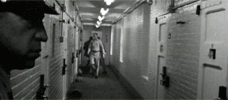
Titicut Follies
1967 -
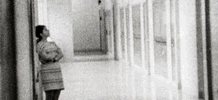
High School
1968 -

Law & Order
1969 -

Basic Training
1971 -
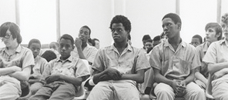
Juvenile Court
1972 -
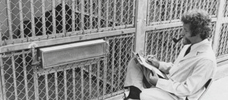
Primate
1974 -
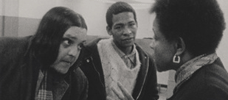
Welfare
1975 -

Meat
1976 -
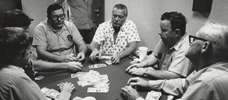
Sinai Field Mission
1978 -
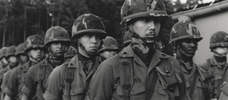
Manoeuvre
1979 -

Model
1980 -

The Store
1983 -

Blind
USA -

Adjustment & Work
1986 -

Missile
1987 -

Central Park
1989 -

Near Death
1989 -

Aspen
1991 -

Zoo
1993 -

High School II
1994 -

Ballet
1995 -

La Comédie-Française
1996 -

Public Housing
1997 -

Belfast, Maine
1999 -
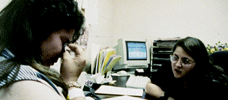
Domestic Violence / Domestic Violence 2
2001 / 2002 -
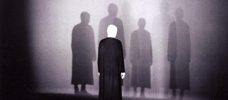
The Last Letter
2002 -

State Legislature
2006
We don’t do comments anymore, but you may contact us here or find us on Twitter or Facebook.



